
Flag of Virgin Islands, 2009
Black and white outline flag of Virgin Islands. white field with a modified US coat of arms in the center…

Flag of Wallis and Futuna, 2009
Black and white outline flag of Wallis and Futuna. Unofficial, local flag has a red field with four…

Flag of Yemen, 2009
Color flag of Yemen. Three equal horizontal bands of red (top), white, and black; similar to the flag…

Flag of Yemen, 2009
Black and white outline flag of Yemen. Three equal horizontal bands of red (top), white, and black;…

Flag of Zimbabwe, 2009
Color flag of Zimbabwe. Seven equal horizontal bands of green, yellow, red, black, red, yellow, and…

Flag of Zimbabwe, 2009
Black and white outline flag of Zimbabwe. Seven equal horizontal bands of green, yellow, red, black,…
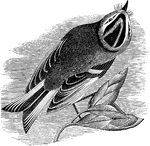
Golden Crested Kinglet
"Upper parts olive-green, more or less bright, sometimes rather olive-ashy, always brightest on the…
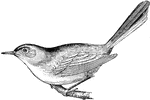
Blue-gray Gnat-catcher
"Grayish-blue, bluer on the crown, hoary on the rump, the forehead black, continuous with a black superciliary…
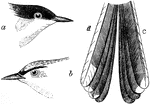
Black-capped Gnat-catcher
"- a, head of a (Polioptila nigriceps) Black-capped Gnat-catcher. b, head of a(Polioptila caerulea)…

European Greater Titmouse
"Head not crested. Wings and tail rounded, of approximately equal lengths, and about as long as the…
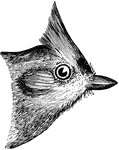
Tufted Titmouse
"Entire upper parts ashy, the back usually with a slight olivaceous shade, the wings and tail rather…
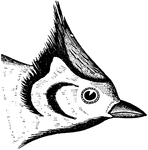
Bridled Titmouse
"Upper parts olivaceous-ash, wings and tail darker, edged with the color of the back, or even a brighter…

13 Star United States Flag, 1776
Black line illustration of a 13 Star United States flag. The original 13 stars represent the states…

20 Star United States Flag, 1818
Black line illustration of a 20 Star United States flag. The additional stars represent the states of…

21 Star United States Flag, 1819
Black line illustration of a 21 Star United States flag. The additional star represents the state of…

23 Star United States Flag, 1820
Black line illustration of a 23 Star United States flag. The additional stars represent the states of…

24 Star United States Flag, 1822
Black line illustration of a 24 Star United States flag. The additional star represents the state of…

25 Star United States Flag, 1836
Black line illustration of a 25 Star United States flag. The additional star represents the state of…

26 Star United States Flag, 1837
Black line illustration of a 26 Star United States flag. The additional star represents the state of…

28 Star United States Flag, 1846
Black line illustration of a 28 Star United States flag. The additional star represents the state of…

29 Star United States Flag, 1847
Black line illustration of a 29 Star United States flag. The additional star represents the state of…

30 Star United States Flag, 1848
Black line illustration of a 30 Star United States flag. The additional star represents the state of…

31 Star United States Flag, 1851
Black line illustration of a 31 Star United States flag. The additional star represents the state of…

32 Star United States Flag, 1858
Black line illustration of a 32 Star United States flag. The additional star represents the state of…

33 Star United States Flag, 1859
Black line illustration of a 33 Star United States flag. The additional star represents the state of…

34 Star United States Flag, 1861
Black line illustration of a 34 Star United States flag. The additional star represents the state of…

35 Star United States Flag, 1863
Black line illustration of a 35 Star United States flag. The additional star represents the state of…

36 Star United States Flag, 1865
Black line illustration of a 36 Star United States flag. The additional star represents the state of…

37 Star United States Flag, 1867
Black line illustration of a 37 Star United States flag. The additional star represents the state of…

38 Star United States Flag, 1877
Black line illustration of a 38 Star United States flag. The additional star represents the state of…

43 Star United States Flag, 1890
Black line illustration of a 43 Star United States flag. The additional stars represent the states of…

44 Star United States Flag, 1891
Black line illustration of a 44 Star United States flag. The additional star represents the state of…

45 Star United States Flag, 1896
Black line illustration of a 45 Star United States flag. The additional star represents the state of…

46 Star United States Flag, 1908
Black line illustration of a 46 Star United States flag. The additional star represents the state of…

48 Star United States Flag, 1912
Black line illustration of a 48 Star United States flag. The additional stars represent the states of…

49 Star United States Flag, 1959
Black line illustration of a 49 Star United States flag. The additional star represents the state of…

50 Star United States Flag, 1960
Black line illustration of a 50 Star United States flag. The additional star represents the state of…

Black-capped Chickadee
"Crown and nape, with chin and throat, black, separated by white sides of the head. Upper parts brownish-ash,…
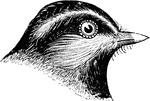
Mountain Chickadee
"Upper part ashy-gray, with scarcely a shade, and only on the rump, under parts similarly grayish-white,…
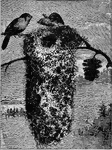
Two Least Bush-Tit Sitting on their Nest
"Dull lead-color, frequently with a brownish or olivaceous shade, the top of the head abruptly darker…
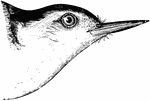
White-Breasted Nuthatch
"Upper parts, central tail-feathers, and much edging of the wings, clear ashy-blue; whole crown, nape,…

Red-breasted Nuthatch
"Upper parts leaden-blue the central tail-feathers the same; wings fuscous, with slight ashy edgings…

Brown-headed Nuthatch
"No black cap or white stripe on head. Upper parts dull ashy-blue; under parts sordid or muddy whitish.…

Crab's-Eye Vine
"Crab's-eye vine. Weather Plant. Fig. 64. - Height 10-12 ft.; frequently trailing over the ground S.:…

Rock Wren
"Upper parts pale brownish-gray, minutely dotted with blackish and whitish points together, and usually…
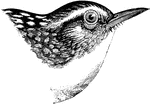
Long-billed Marsh Wren
"Long-billed Marsh Wren. T. palustris. Above clear brown, unbarred, the middle of the back with a large…

Shore Lark
"Shore Lark or Horned Lark. Upper parts in general pinkish-brown, this pinkish or vinaceous or liliaceous…
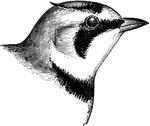
Shore Lark
"Shore Lark or Horned Lark. Upper parts in general pinkish-brown, this pinkish or vinaceous or liliaceous…
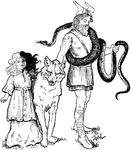
Loki and his Pets
Loki goes into Asgard with his daughter, Hela, and his pets, Jormundgand the serpent, and Fenris the…

Backgammon Board
"Backgammon, a game played by two persons upon a table or board made for the purpose, with pieces or…
Grenadier
Grenadiers or rattails (less commonly whiptails) are generally large, brown to black gadiform marine…
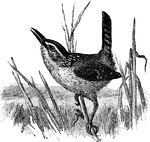
Marsh Wren
The Marsh Wren (Cistothorus palustris) is a small North American songbird of the wren family. It is…
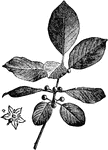
Alder Buckthorn
"Alder Buckthorn. Buckthorn, the name of an extensive genus of trees and shrubs, order Rhamnaceae."…
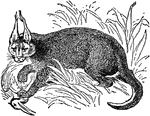
Caracal with Prey
"Caracal, a species of lynx; a native of Northern Africa and Southwestern Asia. It is about the size…

A White and Yellow Wagtail Sitting on the Rocks
A (Motacilla alba) or White Wagtail (upper) and a (Motacilla flava) Yellow Wagtail (lower) sitting on…
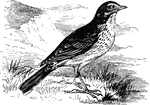
Meadow Pipit
"Meadow Pipit or Anthus pratensis. Upper parts greenish-brown distinctly marked with blackish-brown…

Black Throated Green Warbler
"Black Throated Green Warbler or Dendroica virens. Back and crown clear yellow-olive; forehead, superciliary…
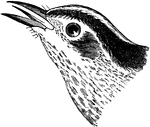
Black and White Creeper
"Black and White Creeper or Mniotilta varia. Black; edges of feathers of upper parts, coronal, superciliary,…

Worm-Eating Warbler
"Worm-Eating Warbler or Helmitheros vermivorus. Olive, below buffy, paler or whitish on the belly; head…
